10 Massive Animals That You Can See In The Wild
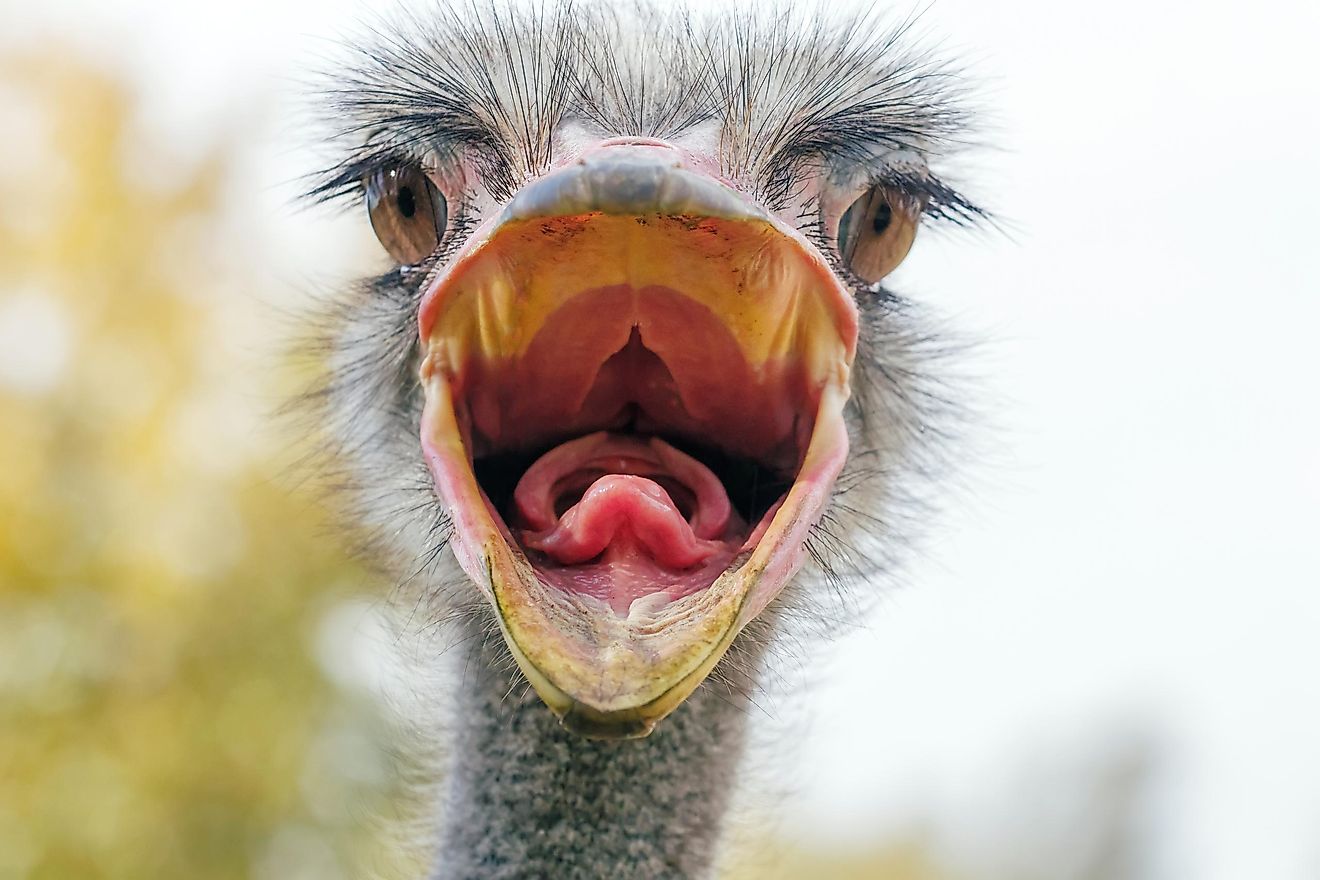
- The blue whale is currently the world’s largest animal that can consume 80,000 pounds of food in a single.
- A giraffe’s neck alone is six feet making it almost the height of the average human being.
- Anacondas can grow so muscular with the thickest parts of their bodies reaching 3 feet.
- Whale sharks are among the longest living animals with a lifespan of around 150 years.
In the animal world, size matters. The bigger you are, the lesser the predators and the more extensive your territory. The planet has seen massive animals before, especially in the dinosaur era, where the largest animals to ever roam the earth existed. The biggest dinosaur to ever live was the Argentinosaurus huinculensis, which is believed to have weighed 96 tons and grew to 130 feet high. After the 5th mass extinction, new species appeared, and some of them still exist to this day. Here are the ten massive animals that you can find in the wild today.
The Blue Whale
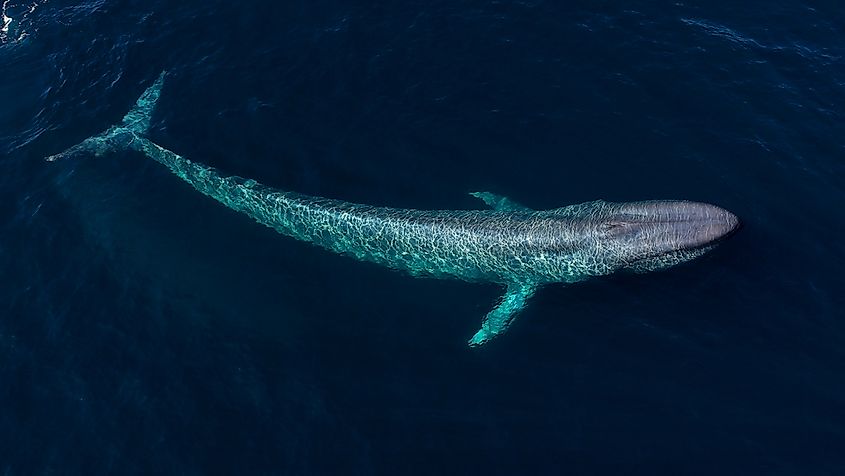
With a maximum confirmed length of 98 feet and a bodyweight of 354,000 pounds, the blue whale stands above every other living animal as the biggest on the planet. Despite their massive sizes, blue whales depend on the smallest marine organisms for food, tiny animals such as krill that are only two inches in length. An adult blue whale can consume 80,000 pounds of krill in a single day.
The Colossal Squid

The most elusive sea creature that usually hides in the deep seas at depths of about 3,200 feet. The colossal squid can grow to 46 feet in length and weigh 1,100 pounds. The animal has some unique traits. For instance, they are the largest invertebrates on the planet on top of being the owners of enormous eyes of any animal. They also possess a hard beak in their mouth openings that they use to slice food before ingesting. They are 10 inches long in diameter, which is the size of a soccer ball.
The African Elephant
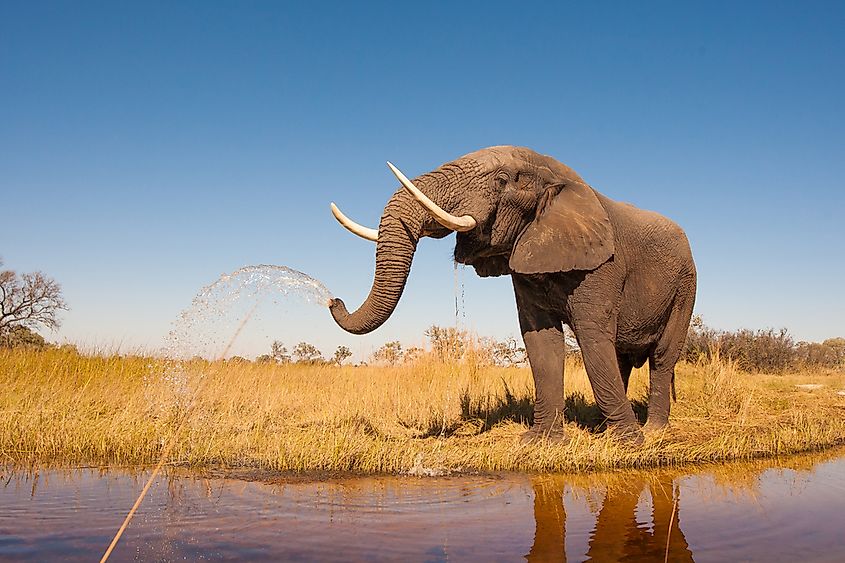
The African elephant is presently holding the record as the largest land animal in the world that can grow to reach 13 feet in height and weigh about 14,000 pounds. The largest African elephant ever recorded was one from Angola that weighed 24,000 pounds and stood at almost 14 feet tall. An adult can chew through 300 pounds of vegetation in a single day, making elephants the world’s most effective foragers. They need as many nutrients as they can get to sustain their massive bodies. They live for 50 to 70 years. The oldest recorded living African elephant attained 86 years of age. Elephants have no known predator in the wild, but lions have been known to attack unprotected calves. The only threats to elephants are humans.
The Giraffe
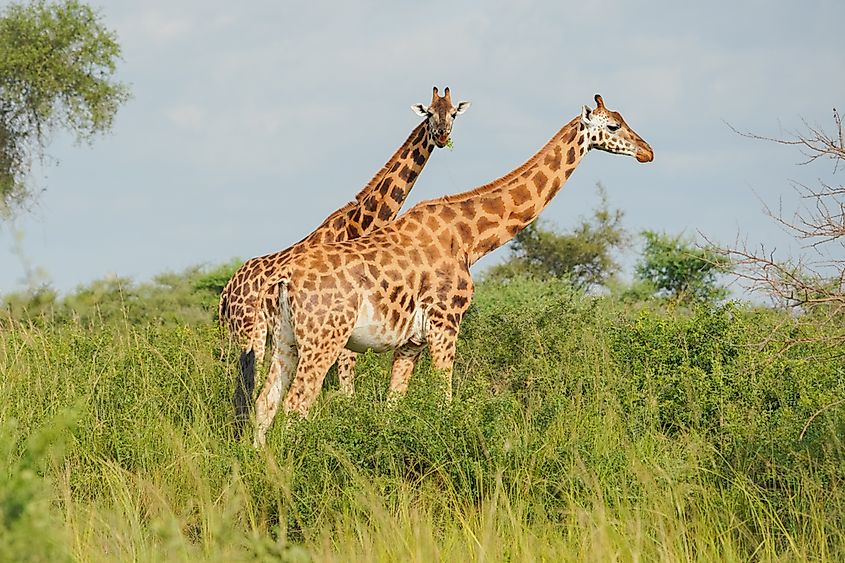
The giraffe is the tallest living animal on earth standing at 19 feet tall with the neck alone measuring a staggering 6 feet, which is the average height of a human being. Giraffes use their long necks and long tongues to feed on the leaves on top of trees. We have four extant species of the giraffes, and they include the Northern giraffe, the reticulated giraffe, the Southern giraffe, and the Maasai giraffe.
The Brown Bear
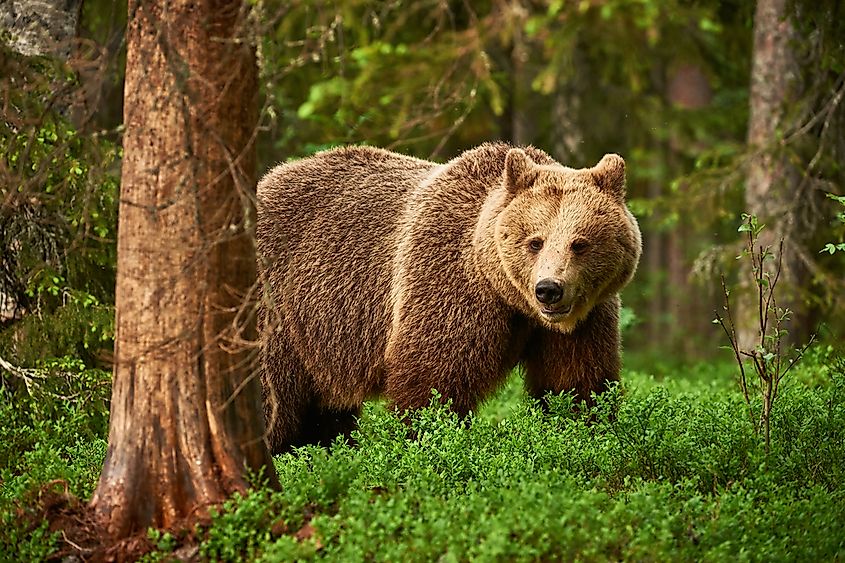
The Brown bears are the largest land carnivores on the planet that can attain 2,000 pounds in weight and reach a height of 10 feet when they stand on their hind legs. Besides having an excellent sense of smell, brown bears are quite intelligent and are known to possess sharper navigation skills than humans with perfect memories. An interesting fact about the brown bears, they are omnivorous, with over 90% of their food energy derived from vegetable matter.
Whale Shark
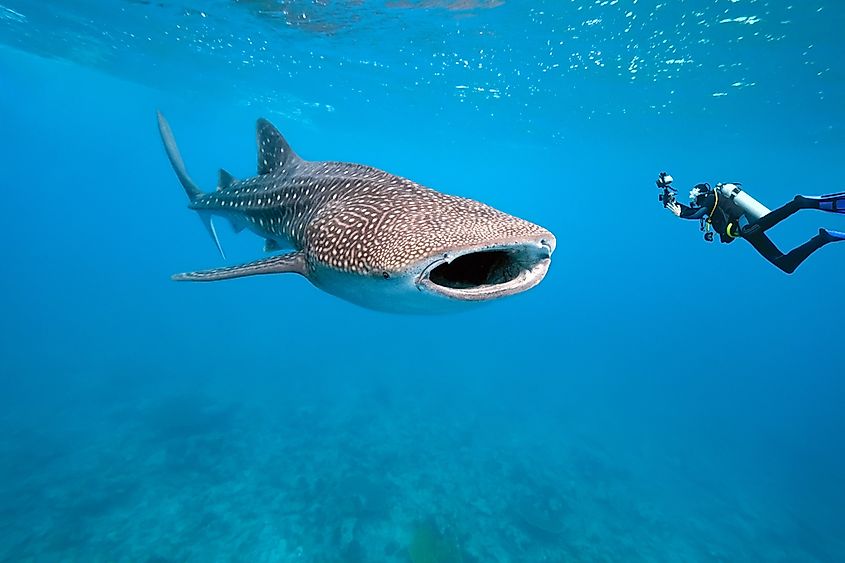
The Whale Shark holds the record as the largest living fish in the ocean that grows to reach 40 feet long and can weigh around 24 tons. As is the case with most massive marine animals, whale sharks are filter feeders, and they live off tiny planktons, small fish, and crustaceans. Interesting facts about the whale shark is that they are 100% fish and are not related in any way to the whales, which is a common assumption among people. Whale sharks are known to live for 150 years. There is a mystery surrounding the birth process of the whale shark since none has ever been recorded. Their breeding grounds are still in the realm of speculations so far. It is believed that they carry about 300 live pups in their bellies, but only 25% make it out alive.
Saltwater Crocodile
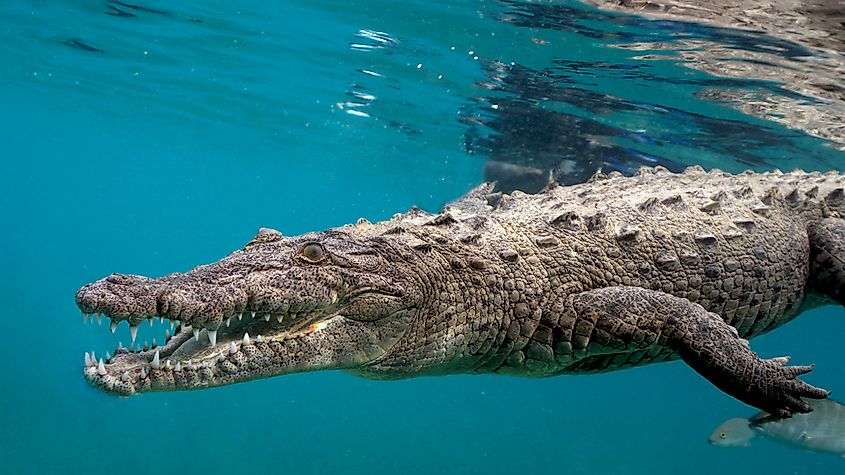
The largest living reptile in the wild that grows to 17 feet in length and 1,000 pounds in weight. Saltwater crocodiles love brackish and salty waters and are widespread in India and Australia. The giant reptiles feed on anything unfortunate enough to cross their path, and they hunt by lurking just beneath the water surface waiting for its prey, which consists of water buffalos, wild boars, monkeys, and sometimes even sharks. An unusual trait of the saltwater crocodile is the temperature of the egg nest determines their genders. If the temperatures are high, then most offspring will turn out males and vice versa.
The Ostrich
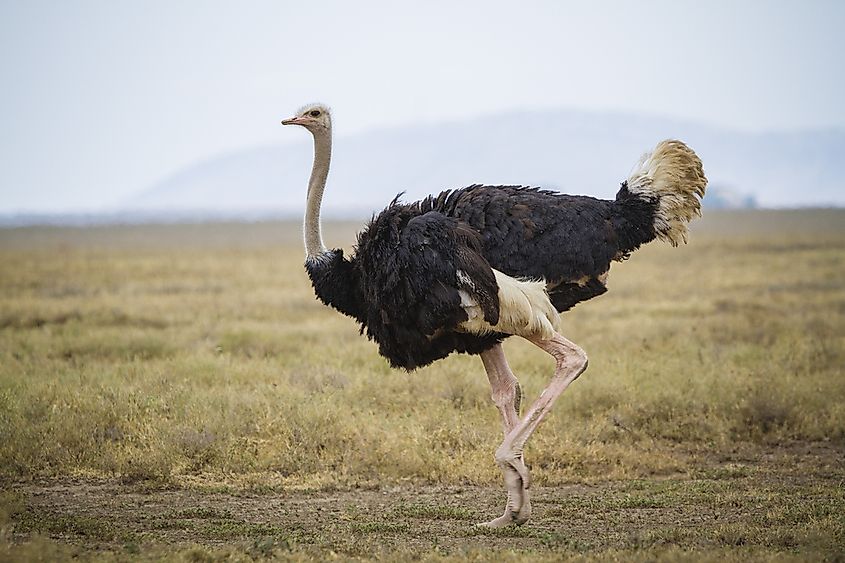
Standing at 9 feet tall, weighing 344 pounds and a wingspan of 6 feet, the ostrich is the largest living bird. It has the biggest eyes of any land animal and can run at speeds reaching 45 miles an hour. They have long legs that they use as weapons, and a single kick can kill a human and inflict severe damage to a predator like a lion. While in flight mode, an ostrich can cover 16 feet in a single stride. Ostriches feed on plants and seeds, but they never pass up the opportunity to eat meat. Lizards, rodents, and snakes are their favorite meals.
The Anaconda

Weighing 550 pounds and measuring over 30 feet in some instances, the anaconda is the largest snake on earth. They are stocky and extremely muscular, with some sections of their bodies reaching three feet in circumference. Unlike most snakes, Anaconda gives birth to live babies that immediately become independent. Anaconda can be found in many tropical jungles like the Brazilian Amazon, Ecuador, Colombia, and Bolivia.
Eastern Gorilla
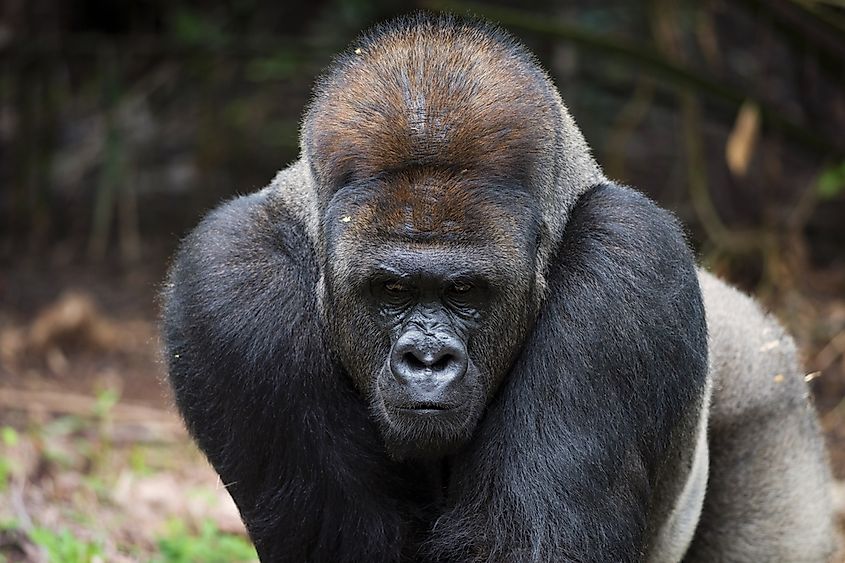
The largest primate in the wild is the eastern gorilla that can grow to 6.2 feet tall and weigh almost 450 pounds. Native to Central and East Africa, the eastern gorilla is an herbivore that subsists on vegetation, wild fruits, celery, tree barks, and pulp. Once in a while, they hunt small animals and insects for their protein needs. They live in groups that can have up to 50 members led by a dominant silverback male. Gorillas are intelligent enough to use tools and construct nesting beds on top of trees.
Other Notable Big Animals
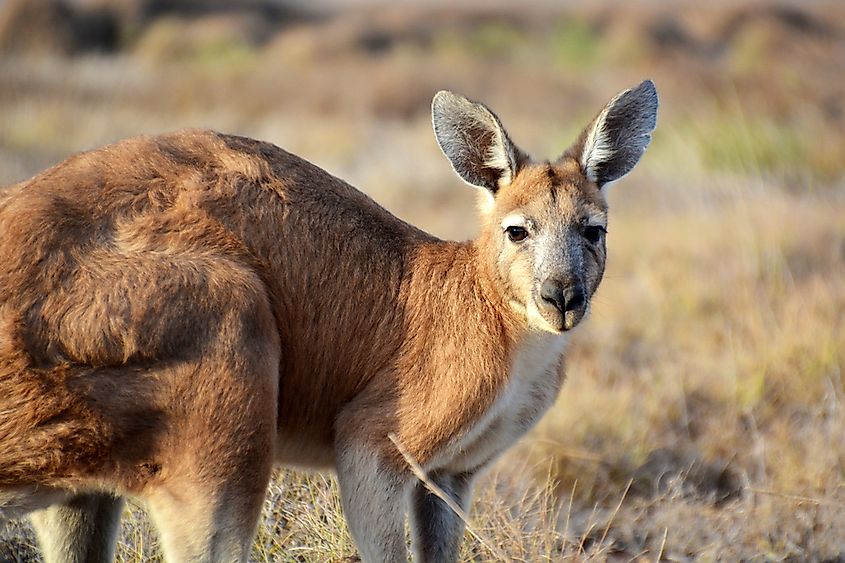
The Capybara is the largest living rodent that reaches a length of two feet and can be found in South America, where it lives near rivers. The Red Kangaroo is the largest marsupial that grows to 5.3 feet high and 200 pounds in weight. The Komodo dragon is the biggest lizard, and it can grow to 10 feet, weighing 200 pounds. The Japanese spider crab is the largest arthropod in the ocean, with a leg span of 12.5 feet. Of the flying birds, the Albatross takes the size crown with a wingspan of 11.5 feet. The Phryganistria Chinensis Zhao is the longest insect on earth that can grow to two feet in length. Tigers hold the record of being the largest cats on the planet, and they can weigh about 660 pounds, the biggest tiger species is the Siberian tiger. Coconut crabs can reach colossal sizes with adults weighing over 9 pounds and have a leg span of three feet. The Nomura jellyfish weighs 440 pounds and measures 6.6 feet making it the largest jellyfish in the ocean.







